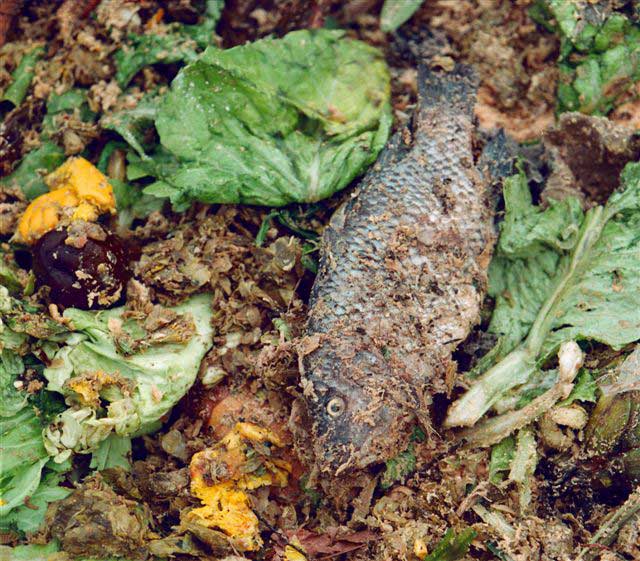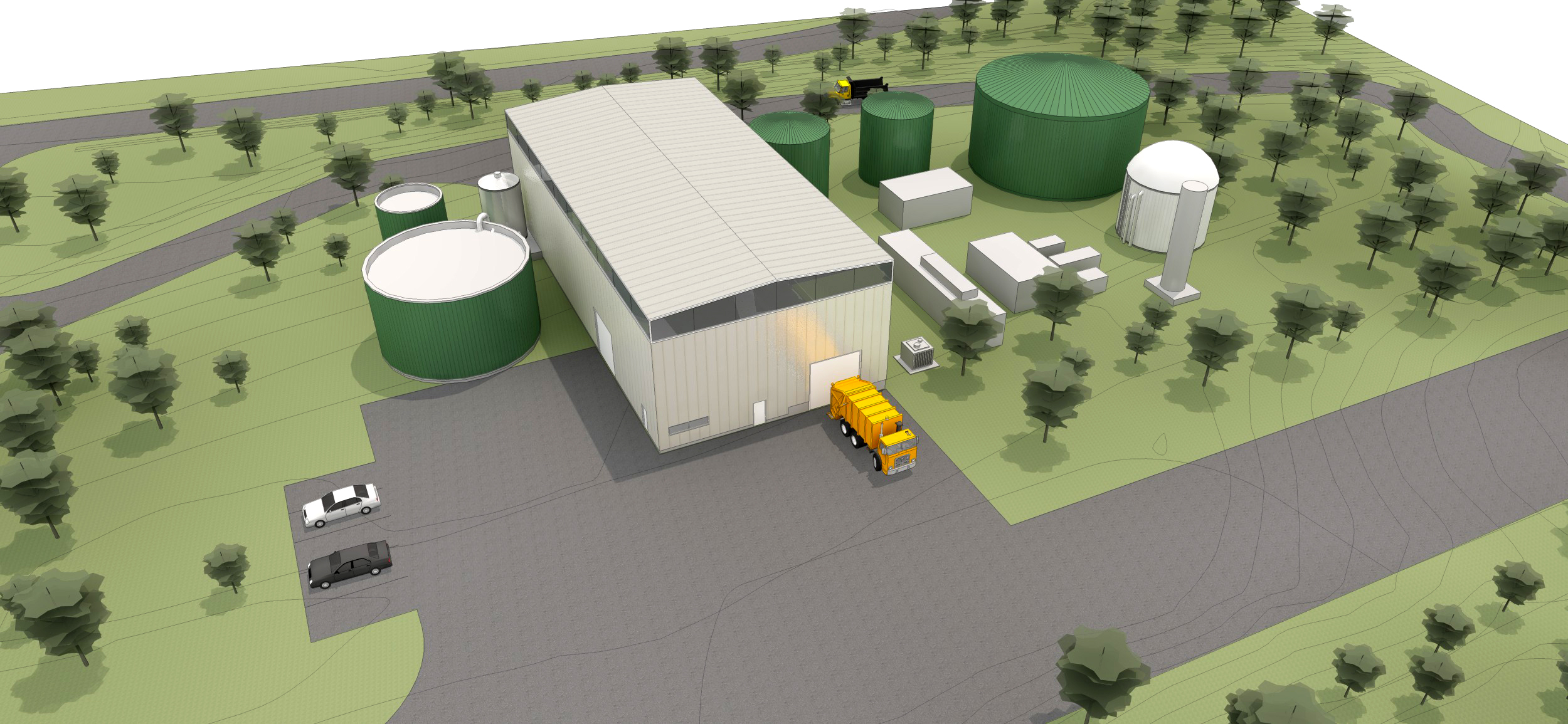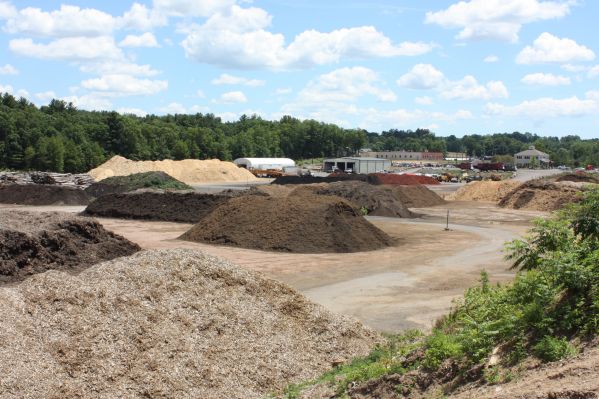When Energy from Waste Makes Economic Sense
Forester Daily News November 30, 2016A Connecticut waste-to-energy project
Quantum Biopower, a waste-to-energy company in Southington, Connecticut, is prepared to make energy and environmental history. Last spring, the company received approval from the Connecticut Department of Environmental Protection to build a food-waste, anaerobic digestion plant. In June, the Southington Planning & Zoning committee gave its approval for construction. When completed—scheduled for the end of 2016—Quantum will become the first anaerobic digestion facility in Connecticut specifically built to take advantage of new regulations that prevent certain food wastes from going directly to landfills or incinerators.
Quantum’s project is important on many fronts. It’s a recycling project, a solid waste project, a materials recovery project, and an energy project. Most critically, it is a new business emerging in a market deliberately structured by policy. It’s the type of private sector response that sends a positive signal that business-as-usual can change. Quantum’s hopeful success, and the myriad of components linked to that success, holds many lessons. One immediate lesson: it is a complicated, labyrinthine story with inter-dependent parts.
Food Waste Disposal – Not A Pretty Picture:
EPA estimates that Americans discard 133 billion pounds of food waste each year—31% of the food supply! Food waste is the single largest component of disposed US municipal solid waste. In Connecticut, with 3.6 million people, that volume is estimated to be around 350,000 tons per year.
There are a lot of efforts to change. EPA and the Departments of Energy and Agriculture, for example, have developed a Biogas Opportunities Roadmap Report, an effort to help the biogas industry grow by using organic wastes as a resource. New England, MA, VT, and RI have food and organic recycling requirements. Many localities, such as New York City, San Francisco, and Seattle, require food waste diversion from landfills. And the biggest food recycling effort in the country starts this year as California implements Gov. Jerry Brown’s 2014 Executive Order dealing with organics recycling, a waste stream that could total as much as 10 million tons annually!

Food waste to energy, fish scrap. Credit: EPA
Connecticut – A Thoughtful Phase-in:
Connecticut lawmakers finished the State’s Commercial Organics Recycling Law (Public Act 13-285) in 2013, effective January 1, 2014. Legislative directive is brief and straightforward:
Sec. 22a-226e. On and after January 1, 2014, each commercial food wholesaler or distributor, industrial food manufacturer or processor, supermarket, resort or conference center that is located not more than twenty miles from an authorized source-separated organic material composting facility and that generates an average projected volume of not less than one hundred four tons per year of source-separated organic materials shall: (A) Separate such source-separated organic materials from other solid waste; and (B) ensure that such source-separated organic materials are recycled at any authorized source-separated organic material composting facility that has available capacity and that will accept such source-separated organic material. The 104-ton limit drops to 52 tons in 2020.
This text is worth a closer look. Connecticut did not establish a food waste dictatorship. The program retains flexibility and choices. It does not make businesses captive to certain facilities. Generators, for example, can deal with their own waste. They can compost it onsite or set up an anaerobic digestion system, which DEEP treats equally with composting as long as the residual “digestate” is composted. A business can donate food to charities or give or sell it to animal feeding operations. But if the waste is shipped off site it must go to a permitted facility open for business within a 20-mile radius.
That’s why Quantum’s startup is important. Southington is a relatively small city of 42,000. However, Quantum’s “Open-for-Business” sign is the equivalent of the Bat Signal for food businesses in a circle that includes much larger cities of New Haven, Waterbury, and Hartford. When Quantum is ready to go, things change.

Quantum Biopower facility illustration.
Connecticut’s commercial focus is important. The state starts with just the largest food businesses, not every business or institution or event that deals with food. These limits are important. Large businesses know about waste logistics. The Connecticut Grocers’ Association supported the new law, working with legislators on final development. A commercial focus excludes food scraps from households and restaurants, avoiding difficult issues. Limited implementation makes startup easier while still zeroing in on significant waste volumes.
Environmentalists and alternate energy advocates are loud in their insistence that wastes can really be a resource, if only political leaders would set the correct policies. CT’s law takes this notion and builds a framework to make it work. That raises questions, of course. Do private investors also see opportunities? Can companies develop a business case and make money? Quantum’s signal is “yes.” In fact, Quantum already has a competitor in the wings. A company called Turning Earth, also in Southington, is progressing along the same pathway.
The Business Case:
Quantum BioPower saw opportunity in these developments (just as legislators hoped). Actually, Quantum was formed as a new subsidiary of Supreme Industries, a forest products and landscaping company in Southington. Supreme Forest Products sells mulch, topsoil, compost, and playground safety fibers—products made by Supreme from cleared wood and other woody wastes that the company collects as a construction contractor.

Quantum’s green waste recycling center. Quantum processes about 150,000 cubic yards/year of woody waste at this site, turning it into mulch, soil and compost.
For companies like Supreme, Connecticut’s food waste diversion makes available an endless organic supply, a basis material, if you will, that could add substantial volume and quality to products Supreme was already selling. Not only was this material free, but generators would also pay to get rid of it.
At Supreme, the wheels started turning. Food waste is a constant. Waste generators, going forward, had to look for some kind of recycling services. Volumes and demand might change, but neither would just disappear.
Quantum Biopower was born. It would be located adjacent to Supreme’s landscaping and composting facility in Southington. The residual material from Quantum’s anaerobic digestion process would be shipped next-door and mixed in with other earthen products. This represents a win-win situation for both Quantum and Supreme: A win for companies needing to avoid landfilling, and a public policy win.
It’s taken a long time for Quantum to get to its almost-ready-to-go status. Quantum submitted its state permit application to DEEP in December of 2013. As of mid-March, 2016, a draft was still not ready.
Quantum’s experience exemplifies just how many moving parts there are, anticipated and unanticipated, that have to move in unison in order to make the full sum of this type of project worthwhile. If those parts aren’t synchronized, if they don’t mesh, the whole thing can grind to a halt.
Brian Paganini, Quantum’s vice president, told a Connecticut House-Senate joint committee on technology and energy, in February, that the company risked coming up to expiration dates on parallel energy related issues because the DEEP permit was taking so long. Adding urgency is the fact that Quantum has customers lined up, waiting to start shipping their food waste.
Quantum’s decision to generate electricity is a decision for its facility and because of energy market conditions (It will lose 10-15% of generation to parasitic load). Managers of similar projects and facilities might make other decisions. A company could sell gas to a local gas utility, for example, or to nearby industrial or institutional customers. Another project might seek to compress the gas into a vehicle grade transportation fuel. The point is, electrical generation and sale to the utility grid is just one option with a biodigester project. From a policy standpoint, such choices are important. An energy deal that makes sense today may not be as attractive, or even available, as seen below, under future pricing and policy conditions.
As Quantum anticipates startup, it’s the energy revenue, along with tipping fees that will be critical going forward. Brian Paganini divides Quantum’s economic pie chart into three sections. Tipping fees will account for about two-thirds of revenue; electricity sales, about one-third; and revenue from the residual biodigester waste, valuable as fertilizer, contributes just a tiny slice to the revenue pie.
This is somewhat ironic for a project that started because of opportunities related to compost and landscaping. This value shift raises many issues. Should Quantum next hire an energy policy expert or a biochemist? For legislators who want to affect landfill diversion, or energy, or both, what should they focus on in this intertwined set of systems? In the future, the near future, these issues will not easily be untangled; to the contrary, they seem destined to get pulled into a knot that gets tighter and tighter.
An Energy Partnership – The Heart of The Matter:
As noted, Quantum established an interconnection agreement (IA) with Eversource. An IA establishes the technical requirements for the safe splicing-in of power moving back and forth between the customer generator and the grid. The IA spells out who will do what on each side of the meter. An IA can also contain a startup deadline. If that deadline is missed, some work may need to be redone. This is a concern for Quantum as it waits and waits for a final permit.
Customer generated power yields credits from the utility. The meter spins backwards. However, when Quantum projected revenue from its electricity sales, based on Eversource’s standard offer, the estimated income didn’t justify the project.
The company then worked with the Town of Southington to set up a generation and sales partnership. Quantum and Southington worked for inclusion in an emerging state program called virtual net metering (VNM). In Connecticut, VNM allows municipal, agricultural, and state institutional customers to sell electricity to a utility even if the power source is not owned or directly controlled by the town, farm, or public institution, and if the source is remote from those entities.
Quantum will supply power to the grid via its interconnection agreement with Eversource. The Town of Southington, however, will use the power, distributed among meters at the Town’s wastewater treatment plant, water tower, town hall, municipal center, and fire department. Eversource will pay Southington and then the Town will compensate Quantum, the generator. Southington’s power costs are lower under the agreement.
Why does the partnership work but a singular status for Quantum did not? Virtual net metering is more generous than standard offer. It is designed to attract new and different generation sources. It includes a number of policy advantages compared to standard net metering. With VNM participants, the customer generator is credited, or compensated, at the retail electric rate, not a lower wholesale rate. Plus, the VNM program allows for a percentage of distribution and transmission credit. VNM beats the standard offer.
There’s more: the utility can recover some VNM costs through its customer base. For VNM supporters this ratebase recovery is justified, because of support for new and diverse energy sources providing long-term benefits, advancing environmental goals (recall, this report started with a focus on food waste and landfills), and helping CT avoid some fuel price volatility. A generator like Quantum, focused on food waste reduction, material recovery, and clean energy production—all public policy priorities—presents as the type of company VNM would target.
Once the partnership is running, Southington will pay Quantum for an estimated 4,803,390 kWh at a maximum price of 15.885 cents per kWh (4.857 cents for distribution and transmission, and 11.028 cents for generation). Actual prices will be linked to then-current rates. The maximum annual amount paid to Quantum could equal $763,019. The agreement is calculated based on numbers and data from 2014 and 2015. The distribution and transmission charge declines from 80% in the first year, 60% in the second, and then stays at 40% thereafter.
Quantum is lucky. Participation in Connecticut’s virtual net metering program is limited. Customers must apply to participate. The program is capped at $8 million. Enrollment in each class is capped at $3.2 million. Recall that Turning Earth is coming up behind Quantum. To the extent one is needed, Turning Earth has to find a different partnership.
Hard Questions Ahead:
Hopefully Quantum will soon be clicking into high gear. That success means less food waste is landfilled, a public policy goal. Connecticut citizens will use power from a low-carbon, non-fossil source, another public policy goal. Quantum’s generation will increase system supply without new utility investments, another public policy goal.
But interestingly—and really frustratingly—the VNM program is a pilot program; it may be temporary. It will be reassessed by the legislature following a report from DEEP, due by January 1, 2018. It means the VNM programmatic benefits, so important to Quantum’s business case, could disappear. It means that planning for food waste, landfills, energy, and how all of those issues are linked, is stuck in short-tem, not long-term.
Importantly, the threshold for Connecticut’s recycling-first mandate drops to 52 tons per year in less than four years! New facilities and capacity will be needed. Yet it’s taken one company over two years to (almost) get a solid waste permit. If an expanded landfill diversion is to work—bumping into another set of inter-related economic, environmental, and energy issues—maybe 15 or 20 permit applications should be getting started now, not later. But hard and fast decisions will likely wait until after the DEEP assessment report is completed, possibly as late as January 1, 2018.
Perhaps a final lesson from reviewing Quantum’s progress is how core issues shift: food waste and organic recycling was the initial focus. Siting and permitting an aerobic digestion facility dominated a second, still-inconclusive phase. Next was the effort to maximize the facility’s energy potential, a circuitous pathway, hardly an off-the-shelf recommended practice for dealing with distributed generation. What should a company do with excess power?
Now, more than two years later, Quantum’s future is linked to another set of topics: whether VNM is temporary or permanent. And, if permanent, what will change regarding state and federal energy policy, utility rates and rate policies, and equity for ratepayers? None of it is easy stuff. For new companies looking at potential opportunities, the scope of work for legislators and regulators needs to be expansive. Straight-ahead issues have to be dealt with, of course, but so do the interconnected issues to the left and right—issues perhaps at center stage at the next phase of a project.
In the solid waste business success is conditional. A company may do everything right but if the adjunct landscape presents too many unresolved hurdles, business plans stop and old food keeps getting dumped in landfills.